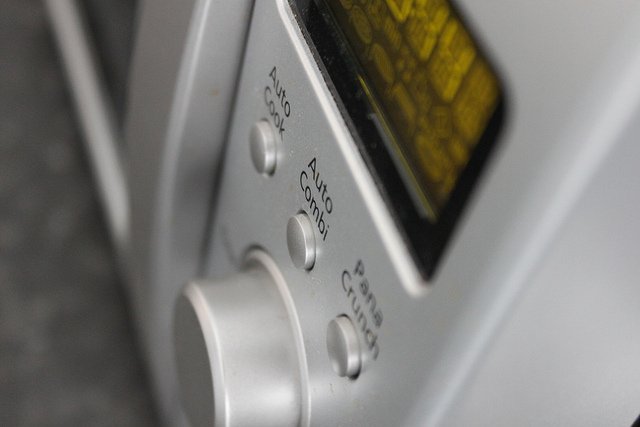
Microwaves usage across the EU alone emits as much carbon dioxide as nearly seven million cars according to a new study by The University of Manchester.
Researchers at the University have carried out the first ever comprehensive study of the environmental impacts of microwaves, considering their whole life cycle, from 'cradle to grave'.
The study found: Microwaves emit 7.7 million tonnes of carbon dioxide equivalent per year in the EU. This is equivalent to the annual emissions of 6.8 million cars.
Microwaves across the EU consume an estimated 9.4 terawatt hours (TWh) of electricity every year. This is equivalent to the annual electricity generated by three large gas power plants.
Efforts to reduce consumption should focus on improving consumer awareness and behaviour to use appliances more efficiently.
Microwaves account for the largest percentage of sales of all type of ovens in the European Union (EU), with numbers set to reach nearly 135 million by 2020. Despite this, the scale of their impacts on the environment was not known until now.
The study used life cycle assessment (LCA) to estimate the impacts of microwaves, taking into account their manufacture, use and end-of-life waste management. Altogether, the research team investigated 12 different environmental factors, including climate change, depletion of natural resources and ecological toxicity. They found, for example, that the microwaves used across the EU emit 7.7 million tonnes of carbon dioxide equivalent per year. This is equivalent to the annual emission of 6.8 million cars.
The research shows that the main environmental 'hotspots' are materials used to manufacture the microwaves, the manufacturing process and end-of-life waste management. For example, the manufacturing process alone contributes more than 20% to depletion of natural resources and to climate change. However, it is electricity consumption by microwaves that has the biggest impact on the environment, taking into account its whole life cycle, from production of fuels to generation of electricity. In total, microwaves across the EU consume an estimated 9.4 terawatts hours (TWh) of electricity every year. This is equivalent to the annual electricity generation by three large gas power plants.
The study found that, on average, an individual microwave uses 573 kilowatt hour (kWh) of electricity over its lifetime of eight years. That is equivalent to the electricity consumed by a 7 watt LED light bulb, left on continuously for almost nine years. This is despite the fact that microwaves spend more than 90% of their lifetime being idle, in the stand-by mode.
The study's authors suggest that efforts to reduce consumption should focus on improving consumer awareness and behaviour to use appliances more efficiently. For example, electricity consumption by microwaves can be reduced by adjusting the time of cooking to the type of food.
Waste is another major problem. Due to their relative low cost and ease of manufacture, consumers are throwing more electrical and electronic (EE) equipment away than ever before, including microwaves.
In 2005, across the EU, 184,000 tonnes of EE waste was generated from discarded microwaves. By 2025 this is estimated to rise to 195,000 tonnes, or 16 million individual units being sent for disposal.
Dr Alejandro Gallego-Schmid, from the School of Chemical Engineering & Analytical Science, explains: 'Rapid technological developments and falling prices are driving the purchase of electrical and electronic appliances in Europe.
'Consumers now tend to buy new appliances before the existing ones reach the end of their useful life as electronic goods have become fashionable and 'status' items.
'As a result, discarded electrical equipment, such as microwaves, is one of the fastest growing waste streams worldwide.'
Another major contributing factor to the waste is a reduced lifespan of microwaves. It is now nearly seven years shorter than it was almost 20 years ago. Research shows that a microwave's life cycle has decreased from around 10 to 15 years in the late 90s to between six to eight years today. Dr Gallego-Schmid added: 'Given that microwaves account for the largest percentage of sales of all type of ovens in the EU, it is increasingly important to start addressing their impact on resource use and end-of-life waste.'
The study also shows that existing regulation will not be sufficient to reduce the environmental impacts of microwaves. It recommends that it will be necessary to develop specific regulations for these devices targeting their design. This will help to reduce the amount of resources used to make microwaves and waste generated at the end of their lifetime.
Useful and enlightening article. Would be worth reading the safety aspects of microwaves too and the impact they have whilst in use on the environment in terms of EMF radiation. And I agree, slow cooking is best for taste and health and for appreciation, including for stimulating the senses! : )
Congratulations @culturalproposal! You have completed some achievement on Steemit and have been rewarded with new badge(s) :
Click on any badge to view your own Board of Honor on SteemitBoard.
For more information about SteemitBoard, click here
If you no longer want to receive notifications, reply to this comment with the word
STOPHi! I am a robot. I just upvoted you! I found similar content that readers might be interested in:
https://www.mygreenpod.com/articles/hidden-cost-microwaves/